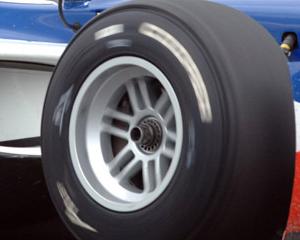
With breakfast well and truly bolted down, and locks and screen of the "Jap-box" defrosted, it was time to negotiate my way gingerly down North Rd to Dunedin's Human Performance Centre.
With extremities still frozen, a photographer and I were ushered into the bowels of the modern Union St facility to the racing simulator room - and into a 35degC wall of heat.
The room, we were told, needs to be hot to give the sense of being nestled close to a high-performance engine with no sound-proofing or heat shield.
With sweat flowing freely we were shoe-horned into a bucket seat designed for the considerably less portly, and were off and racing in a single-seater.
The simulator runs a software programme developed in New Zealand, and the course selected was a very realistic version of the Ruapuna circuit, a small but deceptively quick track near Christchurch.
The rev limiter was on for the pit lane, and maybe it should have stayed that way; during practice laps on cold or sandy tyres I spent more time "investigating the kitty litter" than gracefully sweeping between apexes.
Full surround-sound speakers meant there was no escaping the whine of the Formula Ford-style engine, and that, combined with the unforgiving sequential shift, gave some idea of the potential for sensory overload which confronts drivers.
On lap two the handbrake could still have been on.
A yellow card followed a jumped start, and a disqualification for not observing a yellow flag penalty within three laps followed.
Time for a restart.
On a second attempt I had moments of near control, but runs wide into the rough and problems with some very agricultural left-foot braking were soon compounded when the photographer thought he might "like to have a go".
On a much-needed restart I was rammed on the starting grid, and moments later nudged off-line in a corner, and into the barrier.
This was not only highly annoying; it showed tunnel vision and high speeds don't mix.
Later, with revs approaching the red on the home straight, a flash to the right indicated the photographer was travelling down pit lane the wrong way at maximum warp.
His crowning glory was achieving the impossible.
Technicians gaped in awe as he vaulted his car from an apex marker to the top of a safety barrier, and made it stick.
"We didn't know it could do that," one boffin wryly observed.
My smugness dissolved in the heat moments later, after turning around to find that the future of New Zealand motorsport - nine young New Zealand Elite MotorSport Academy scholarship recipients - were witnessing my uncontrolled slides and frequent use of language worthy of an instant black flag from the control room.
After my inept trundlings, the centre's technicians politely said they achieved lap times around the 1min 20sec mark during installation.
The next day in 50degC heat and full racing kit - heavy flame suits, gloves and helmets - the nine young proteges were soon hitting the 1min 16sec mark. The simulator offers the novice a chance to experience a fraction of the adrenal rush experienced during racing with no risk.
For real drivers it is more like the real thing than a console game.
Overall, the simulator was a very tiring experience.
Much concentration was needed just keep the car on track, and being constantly tense left my arms and shoulders aching.
Worst of all was the transition back to reality; on the drive home I found myself approaching corners in a 50kmh zone thinking "now, if I just chop it down a gear, hold the line and get the power on hard . . ."












